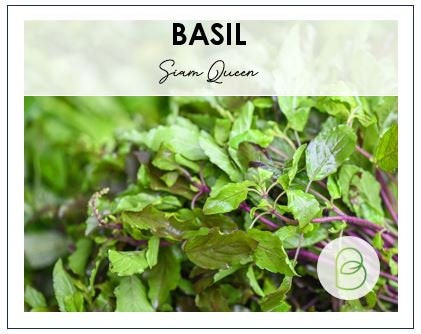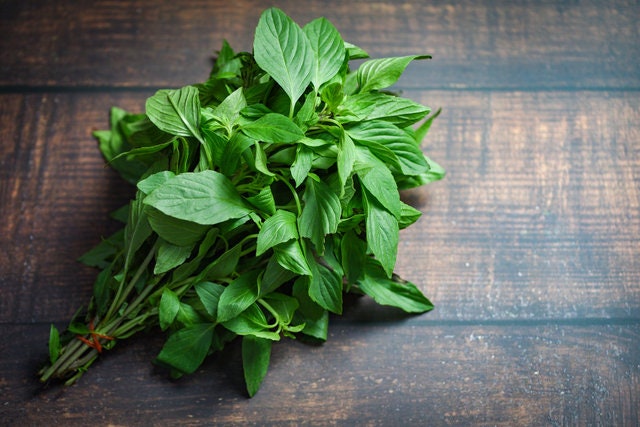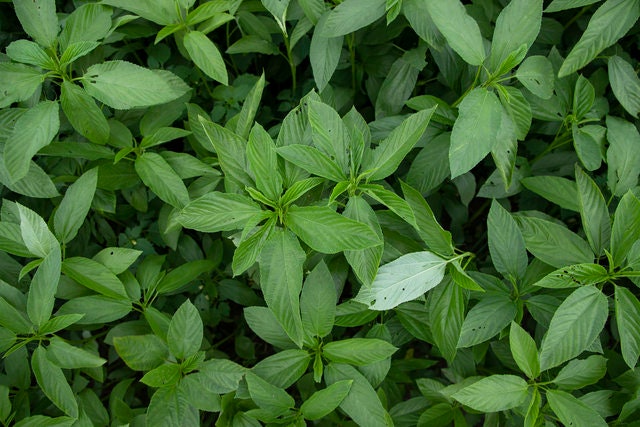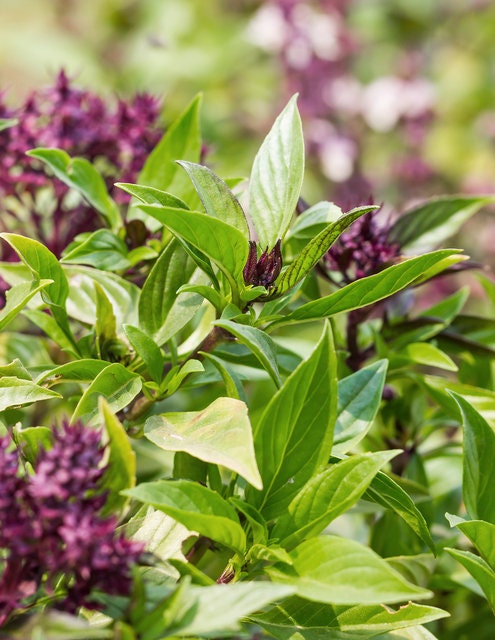My Store
Basil Siam Queen
Basil Siam Queen
Couldn't load pickup availability
0.1g ~50 seeds
Siam basil is a variety of basil native to Southeast Asia. It is widely used in Thai, Vietnamese, and other Asian cuisines for its distinctive flavor, which is slightly spicy and licorice-like with hints of mint and cloves. The leaves of Siam basil are glossy and deep green, with purple stems and flowers. It adds a unique aromatic touch to dishes and is often used in stir-fries, curries, and noodle dishes.
Seed sowing instructions for basil:
1. **Gather Supplies:** You'll need basil seeds, a seed tray or pots, seed compost, a watering can, and labels.
2. **Fill the Tray or Pots:** Fill the seed tray or pots with seed compost, leaving a small gap at the top.
3. **Sow the Seeds:** Sprinkle the basil seeds evenly over the compost surface. Basil seeds are tiny, so be cautious not to sow them too densely.
4. **Cover the Seeds:** Gently press the seeds into the compost using a flat board or your hand. Then, lightly cover them with a thin layer of compost.
5. **Watering:** Water the seeds gently, ensuring the compost is moist but not waterlogged. You can use a fine spray or mist setting on your watering can to avoid disturbing the seeds.
6. **Provide Light:** Basil seeds need light to germinate. Place the seed tray or pots in a bright location, but not in direct sunlight.
7. **Maintain Moisture:** Check the moisture level regularly. The compost should be kept consistently moist, but again, avoid overwatering.
8. **Transplanting:** When the seedlings have developed a few sets of true leaves and are large enough to handle (usually when they're 2-3 inches tall), transplant them into individual pots or the garden if the weather is warm enough.
9. **Harden Off:** If you plan to plant basil outdoors, it's essential to harden off the seedlings by gradually exposing them to outdoor conditions. Start with a couple of hours a day and gradually increase the time over a week.
10. **Planting Outdoors (Optional):** If you're planting basil outdoors, choose a sunny spot with well-draining soil. Space the plants about 12-18 inches apart.
11. **Maintenance:** Water the basil plants regularly, especially during dry spells. Pinch off the tips regularly to encourage bushier growth and prevent flowering, which can make the leaves bitter.
Remember, basil is sensitive to cold temperatures, so if you're in a region with cold winters, you might want to consider growing it indoors or starting new plants from seeds each spring.
Multiple orders of a single item may be combined into 1 seed envelope unless otherwise instructed by buyer.
Multiple orders of a single item may be combined into 1 seed envelope unless otherwise instructed by buyer.We take great care to provide high-quality seeds, corms, and bulbs, all of which are tested for acceptable germination rates. However, because successful growth depends on various factors beyond our control—such as planting conditions, weather, and care—we cannot offer refunds for seeds, corms, or bulbs that do not germinate or sprout.
Thank you for your understanding and support. If you have any questions about planting or care, we’re happy to help!









